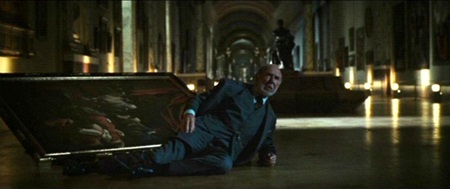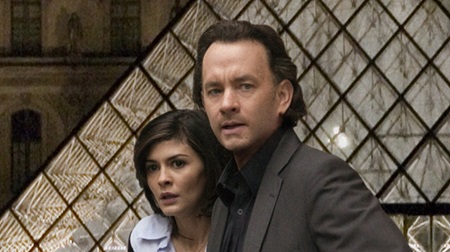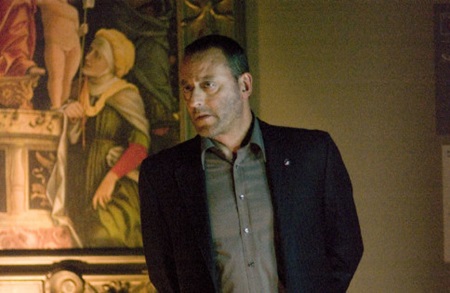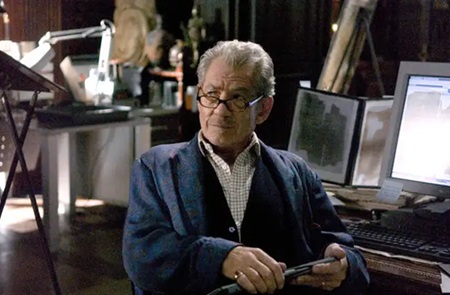Released as a movie in May 2006, the adaptation of the 2003 Dan Brown book The Da Vinci Code became the Ron Howard directed movie The Da Vinci Code (2006). With screenplay writing credit for Akiva Goldsman, the movie focuses on “art history, Christianity’s origins, and arcane theories,” as mentioned here.

The movie begins with the pursuit if Louvre Museum curator Jacques Saunière, as portrayed by Jean-Pierre Marielle, in the world famous Paris, France art museum by Roman Catholic, albino monk named Silas; Silas was portrayed by Paul Bettany. Saunière, while coming out of the exchange dead, leaves clues amongst the artwork of Leonardo da Vinci, the namesake for the movie, the book, and the clues embedded in the art around the museum that lead the police to summon renowned Harvard University symbologist Robert Langdon to the case.

Robert Langdon, as portrayed by Tom Hanks, initially is suspected of the murder of Jacques Saunière, by police captain Bezu Fache, as portrayed by Jean Reno. Police cryptologist Sophie Neveu, as portrayed by Audrey Tautou, disagrees that that Langdon should be suspected of her grandfather’s, that is Saunière’s, murder; Neveu and Langdon shake Fache’s pursuit and deduce that Saunière was a grand master of the French founded Priory of Sion.

Silas, meanwhile, works for an anonymous to him person he calls The Teacher, which has links to the Bishop Aringarosa led Opus Dei. Aringarosa, as portrayed by Alfred Molina. Circumstances send Langdon and Neveu to Sir Leigh Teabing, as portrayed by Ian McKellan.

It was Teabing, a purported expert on the Holy Grail, who introduces a theory contrary to accepted religious canon about a relationship between Mary Magdalene and Jesus, which motivated much of the subtextual mystery functioning in the movie. Charlotte Graham portrayed Mary Magdalene in The Da Vinci Code.

The thriller aspects of the movie, along with the intrigue underpinning the mysteries animating the story for the movie, largely worked. That the resolution went in the direction it did was a bit provocative for my taste, though that does not mean the fiction did not work. I give The Da Vinci Code as directed by Ron Howard 3.75-stars on a scale of one-to-five.
Matt – Saturday, March 23, 2024


 (Find A Way by Diana Nyad).
(Find A Way by Diana Nyad). (Leonardo da Vinci by Walter Isaacson).
(Leonardo da Vinci by Walter Isaacson). (I Know Why The Caged Bird Sings by Maya Angelou).
(I Know Why The Caged Bird Sings by Maya Angelou).
 (Leonardo da Vinci biographer Walter Isaacson)
(Leonardo da Vinci biographer Walter Isaacson) (The Mona Lisa painting by Leonardo da Vinci)
(The Mona Lisa painting by Leonardo da Vinci) (The Last Supper painting by Leonardo da Vinci)
(The Last Supper painting by Leonardo da Vinci) (The Vitruvian Man drawing by Leonardo da Vinci)
(The Vitruvian Man drawing by Leonardo da Vinci) (A Salai drawing by Leonardo da Vinci)
(A Salai drawing by Leonardo da Vinci) (Leonardo da Vinci by Walter Isaacson)
(Leonardo da Vinci by Walter Isaacson)